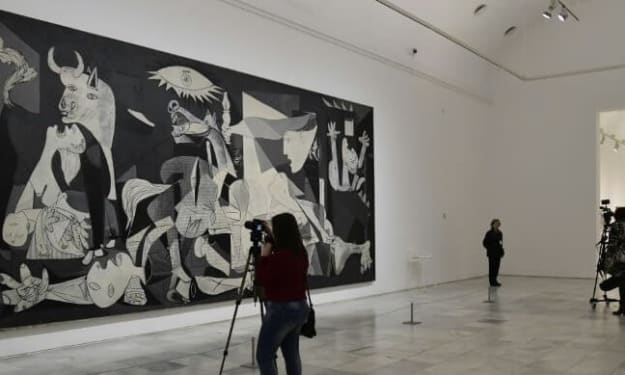Unrevealing The Unknown Facts Of Pharaoh Tutankhamun 👑
Tut's Mysteries

In the heart of ancient Egypt, amidst the golden sands and enigmatic pyramids, a young Pharaoh reigned whose name has echoed through millennia - Tutankhamun, often affectionately known as "King Tut." While many have heard of this iconic Egyptian ruler, there are some lesser-known facts about his life and his incredible tomb that continue to intrigue and mystify us to this day.
🏛️ 1. Tutankhamun's Early Reign
Pharaoh Tutankhamun ascended to the throne at the tender age of nine. His reign, which lasted from 1332 to 1323 BCE, saw him become a symbol of Egypt's resilience and revival after the tumultuous period of Akhenaten's rule.
🌟 2. A Pharaoh's Childhood
Tutankhamun's childhood remains a subject of fascination. He lived during a time of great religious upheaval when his predecessor, Akhenaten, introduced monotheism and neglected traditional Egyptian gods. Tutankhamun's upbringing likely included a return to these ancient beliefs.
⏳ 3. The Mysterious Death
The exact cause of Tutankhamun's death remains shrouded in mystery. Recent studies suggest he may have suffered from various health issues, including a leg injury and malaria, which could have contributed to his untimely demise at the age of 18 or 19.
🌍 4. Global Tour Sensation
In 1972, Tutankhamun's treasures embarked on a worldwide tour, captivating millions. This exhibition introduced the world to the grandeur of ancient Egypt and sparked a renewed interest in archaeology and Egyptology.
📜 5. The Curse of the Pharaohs
The legend of the "Curse of the Pharaohs" began when several individuals connected to the excavation of Tutankhamun's tomb died mysteriously. While many believe it was mere coincidence, it added an air of intrigue to the discovery.
💎 6. Treasures Beyond Imagination
Tutankhamun's tomb was a treasure trove unparalleled in history. His burial chamber contained a stunning array of artifacts, including the iconic golden mask, chariots, jewelry, and even a throne. These treasures offer a glimpse into the opulence of the Pharaoh's era.
🧬 7. DNA Revelations
Recent scientific advancements, including DNA analysis, have unveiled more about Tutankhamun's lineage. It is believed that he was the son of Akhenaten and a lesser-known wife, making him part of the powerful 18th dynasty.
🔑 8. The Intricately Designed Tomb
Tutankhamun's tomb, located in the Valley of the Kings, was meticulously designed and filled with intricate details. Its walls were adorned with scenes from Egyptian mythology, offering insights into the afterlife's importance.
🌌 9. Astronomy and the Afterlife
The alignment of the tomb's layout suggests an astronomical connection. Some believe that the positioning of the burial chamber's entrance was intentionally designed to align with certain stars, guiding the Pharaoh to the afterlife.
📚 10. The Sudden Fame
Tutankhamun's fame was sudden and unexpected. His tomb was discovered in 1922 by British archaeologist Howard Carter, causing a global sensation. The pristine condition of the tomb and its contents provided an unparalleled glimpse into ancient Egypt's grandeur.
🌄 11. Restoring Ancient Egypt's Glory
Tutankhamun's reign aimed at restoring Egypt's religious and political stability after the tumultuous reign of Akhenaten. His efforts played a crucial role in reestablishing traditional religious practices and political order.
🌗 12. The Power Behind the Throne
During Tutankhamun's reign, the influential vizier Ay and the general Horemheb likely played pivotal roles in governing Egypt. Ay later succeeded Tutankhamun as Pharaoh, and Horemheb became the last ruler of the 18th dynasty.
🌞 13. Sun Worship and Atenism
Tutankhamun's reign marked a transition from the monotheistic Atenism of Akhenaten to the traditional polytheistic Egyptian religion, which centered around the worship of the god Amun.
🌍 14. Tutankhamun's Global Legacy
Tutankhamun's impact extended beyond Egypt. His treasures continue to inspire art, culture, and fashion, while his story remains a symbol of Egypt's enduring fascination.
🔒 15. Sealing the Tomb
The tomb's intricate sealing was intended to protect the Pharaoh's remains and treasures for eternity. It bore inscriptions invoking curses on anyone who dared to violate it.
YouTube Illustration: https://www.youtube.com/shorts/5nRoyVrgj7k





Comments
There are no comments for this story
Be the first to respond and start the conversation.